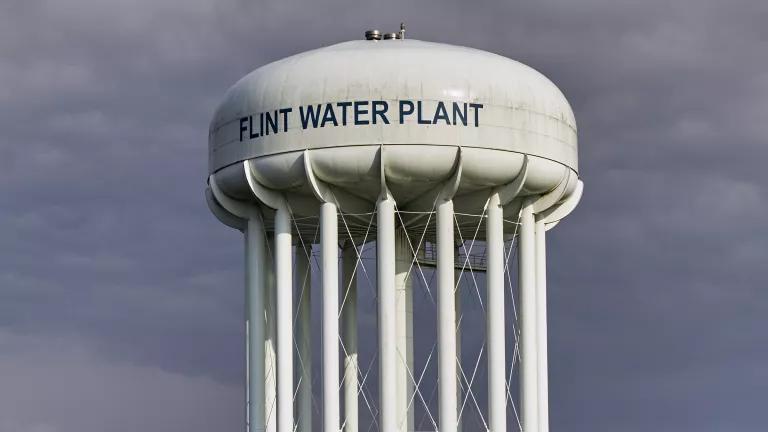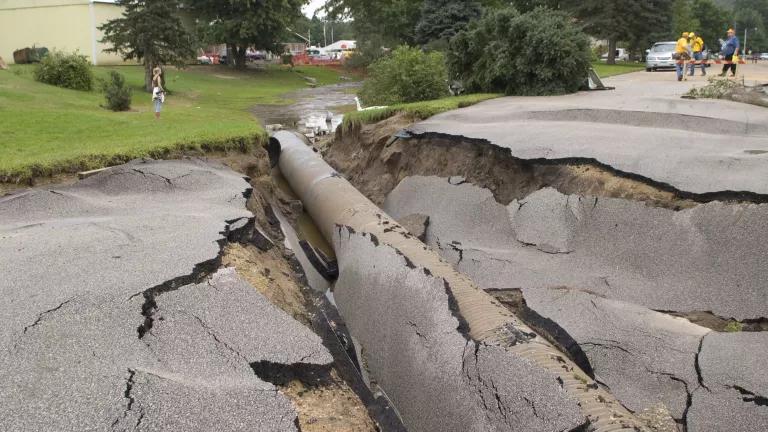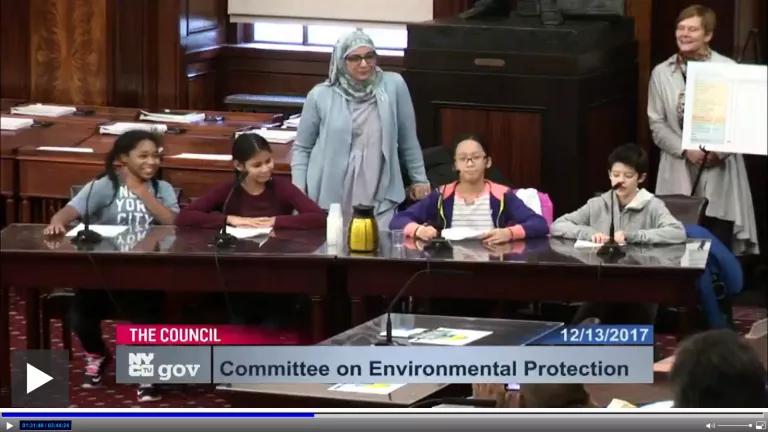Fixing Our Water Infrastructure: Smarter, Fairer, More
It's no secret. America needs to invest—big league—to bring our water infrastructure into the 21st century.
If anyone had forgotten, the ongoing tragedy in Flint was our national wake-up call.
Today, I testified in Congress at a hearing focused fixing our nation’s wastewater (sewage) and stormwater infrastructure. I invite you to read below the summary version of my testimony, which I delivered orally this morning, for details about the water infrastructure problems we face and the solutions at hand. And see my full testimony here—drafted with the help of my incredible NRDC Water Program colleagues—for a whole lot more detail.
Two mayors, a county commissioner, the director of a state environmental agency, and a water resources engineer sat alongside me at the witness table. By the end of the hearing, one thing was clear. There was a whole lot we could agree on.
All agreed that we need to ensure clean water for all of our communities—both wealthy ones and those less well-to-do. And all agreed—or at least none disagreed—that this requires meeting the Clean Water Act standards that protect our health and environment.
All agreed that we need to be smarter about how we do this—for example, by using cost-effective solutions like green infrastructure, wherever it can achieve clean water results and improve our neighborhoods.
All agreed that we need to use fairer and more equitable ways to raise the necessary funds, which do not unduly burden low-income households.
And all agreed that we need more federal and state funding to help communities meet their water infrastructure needs.
Let’s hope that Congress takes note, and passes legislation that promotes smarter water infrastructure practices, supports assistance to low-income water and sewer customers, and substantially increases federal and state aid for local water infrastructure improvements.
Testimony of
Lawrence M. Levine
Senior Attorney
Natural Resources Defense Council
Before the
U.S. House of Representatives
Transportation and Infrastructure Committee
Subcommittee on Water Resources and Environment
Hearing Entitled
“Building a 21st Century Infrastructure for America:
Improving Water Quality Through Integrated Planning”
May 18, 2017
Good morning Chairman Graves, Ranking Member Napolitano, and members of the Subcommittee.
I appreciate the opportunity to testify today.
First-class infrastructure to protect clean water and public health is among our most important—and most basic—needs as a nation.
America’s municipal wastewater and stormwater infrastructure is outdated and failing due to decades of deferred maintenance and a failure to update pollution control technologies.
Far too often, untreated or insufficiently treated sewage and polluted runoff from cities and suburbs makes our rivers, bays, beaches, estuaries, and other waters both unsafe for human use and too degraded to support the fisheries and natural habitat on which we all depend for sustenance, recreation, and natural flood mitigation.
Likewise, our failure to invest adequately in drinking water infrastructure means that, in too many cases, the public is still drinking water containing contaminants that pose serious health risks.
We have heard a lot this morning about the costs of Clean Water Act compliance. We cannot have a two-tiered system where the wealthy get water that is clean and safe for their families, and the less well-to-do get second-class water, wastewater, and stormwater systems that pose risks to their health and environment.
Rather, we need to create a system where all communities can afford to upgrade their water infrastructure, and ensure compliance with legal protections that make certain that they do.
In regard to integrated planning, there are two key points that I would like to emphasize.
First, integrated planning is a valuable tool for complying with Clean Water Act requirements, but it must not be used to water down those requirements.
When done properly, integrated planning encourages communities to look at all of their Clean Water Act requirements holistically and identify ways to sequence investments to attain the greatest health and environmental benefits, in the least amount of time. This encourages the use of solutions like green infrastructure, which save both money and time by addressing more than one community need simultaneously.
Integrated planning must not be confused with approaches—such as H.R. 465, the Water Quality Improvement Act—that would roll back Clean Water Act standards that protect public health and the environment.
Second, discussions of integrated planning must occur in the broader context of (i) the need for increased water infrastructure investment at all levels of government, and (ii) the need to fund that investment in ways that ensure affordable access for all to safe and sufficient water, wastewater, and stormwater services.
Without addressing these two needs, integrated planning alone will not solve our water infrastructure crisis.
Based on these over-arching points, NRDC offers the following recommendations:
- Integrated planning under the EPA’s 2012 Integrated Planning Framework should be used appropriately, as an important tool for cost-effective and expeditious compliance with the Clean Water Act. Congress should not pass any legislation that uses integrated planning to roll back Clean Water Act protections.
- Likewise, the concept of a community’s “financial capability” must not be distorted to undermine public health and environmental protection. Permittees must take advantage of opportunities to improve affordability for ratepayers, and especially for low-income households, before cost concerns are considered as grounds for extending compliance schedules. Any consideration of cost must also consider the benefits of clean water and green infrastructure.
- Congress should establish a Low Income Water and Sewer Assistance Program, and should support the creation and expansion of complementary programs at the state and local levels. NRDC supports H.R. 2328, which would create a pilot program. We further recommend that Congress create such a program nationwide.
- Federal policy should promote local water, sewer, and stormwater rate structures that are fair and equitable to low-income households, as well as best practices that reduce costs for all customers, such as asset management, green infrastructure and water efficiency.
- Congress should increase the cap on the amount of State Revolving Fund assistance that states can distribute as grants. A revised cap should provide incentives to states to invest more in water infrastructure and to direct more financial support to:
- low-income communities’ water infrastructure needs,
- environmentally innovative projects, and
- projects that prepare our water systems for the impacts of climate change.
- Finally, Congress should triple the current annual appropriations to the SRFs and direct the additional funds to priorities that are currently under-funded, such as lead service line replacement, green infrastructure, water efficiency, and climate resilience.
Thank you for the opportunity to testify today. NRDC looks forward to working with the Subcommittee on bold and effective solutions to our nation’s water infrastructure challenges.



